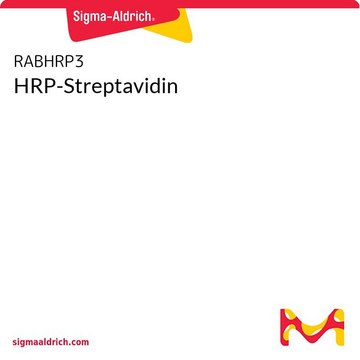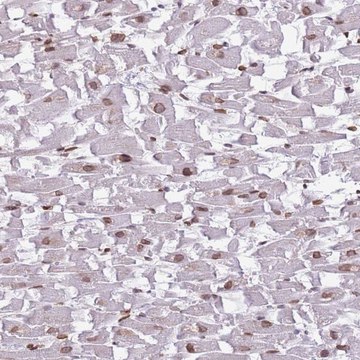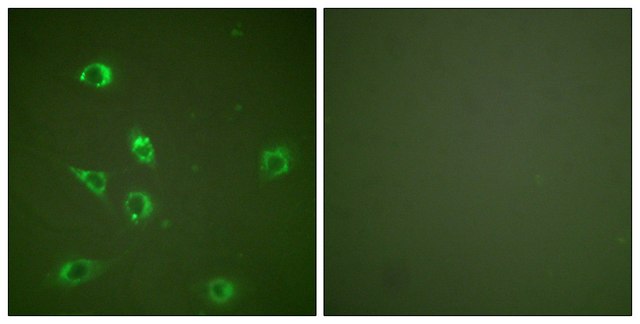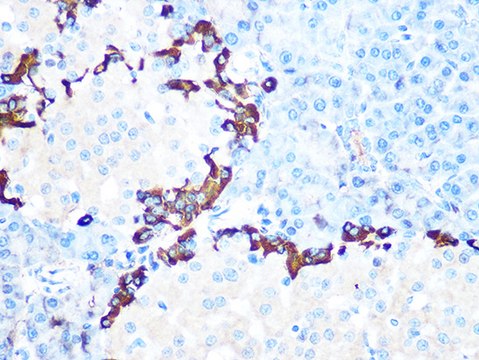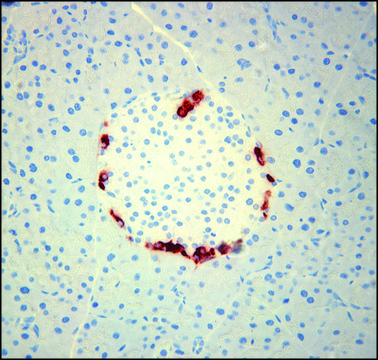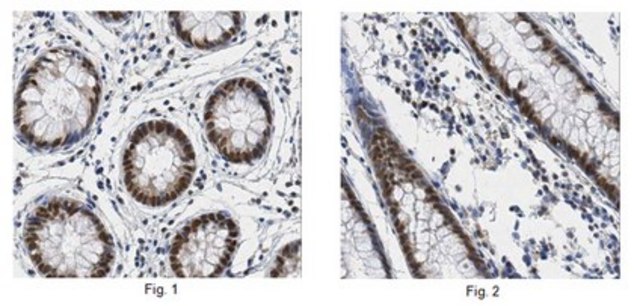AB3244
Anti-GLP-1 (7-36) Antibody, CT amide-reactive
serum, Chemicon®
Synonym(s):
Glucagon-like peptide-1
Sign Into View Organizational & Contract Pricing
All Photos(1)
About This Item
UNSPSC Code:
12352203
eCl@ss:
32160702
NACRES:
NA.41
Recommended Products
biological source
rabbit
Quality Level
antibody form
serum
antibody product type
primary antibodies
clone
polyclonal
should not react with
guinea pig
species reactivity (predicted by homology)
mammals
manufacturer/tradename
Chemicon®
technique(s)
ELISA: suitable
radioimmunoassay: suitable
NCBI accession no.
UniProt accession no.
shipped in
dry ice
target post-translational modification
unmodified
Gene Information
human ... GCG(2641)
Specificity
Glucagon-like peptide-1(7-36) amide (GLP-1), C-terminal reactive. Cross-reacts fully with GLP-1(1-36) amide but shows <0.1% cross reactivity with the unamidated forms GLP-1(7-37) and GLP-1(1-37) or other related peptides such as hGLP-2, glucagon, hGIP and VIP.
SPECIES REACTIVITIES: Most mammalian species. GLP-1 is identical in all mammalian species studied except guinea pig and presumably its South American rodent relatives.
SPECIES REACTIVITIES: Most mammalian species. GLP-1 is identical in all mammalian species studied except guinea pig and presumably its South American rodent relatives.
Immunogen
Epitope: C-terminus amide-reactive
Whole synthetic peptide.
Application
Anti-GLP-1 (7-36) Antibody, C-terminus amide-reactive detects level of GLP-1 (7-36) & has been published & validated for use in ELISA, RIA.
RIA: 1:300,000. Ka = 0.8 x 10E12 l/mol for GLP-1(7-36) amide. Detection limit 0.1 fmol/tube, 95% confidence limits.
EIA (capture). Detection limit 1.5 pmol/liter.
Note: Plasma samples require extraction for RIA, but not for sandwich EIA. Optimal working dilutions must be determined by end user.
EIA (capture). Detection limit 1.5 pmol/liter.
Note: Plasma samples require extraction for RIA, but not for sandwich EIA. Optimal working dilutions must be determined by end user.
Research Category
Metabolism
Metabolism
Research Sub Category
Metabolic Hormones & Receptors
Metabolic Hormones & Receptors
Physical form
Rabbit serum, diluted. Liquid in PBS containing 0.05% sodium azide.
Storage and Stability
Maintain frozen at -20°C in undiluted aliquots for up to 6 months. Avoid repeated freeze/thaw cycles.
Legal Information
CHEMICON is a registered trademark of Merck KGaA, Darmstadt, Germany
Disclaimer
Unless otherwise stated in our catalog or other company documentation accompanying the product(s), our products are intended for research use only and are not to be used for any other purpose, which includes but is not limited to, unauthorized commercial uses, in vitro diagnostic uses, ex vivo or in vivo therapeutic uses or any type of consumption or application to humans or animals.
Not finding the right product?
Try our Product Selector Tool.
Storage Class Code
10 - Combustible liquids
WGK
WGK 2
Flash Point(F)
Not applicable
Flash Point(C)
Not applicable
Certificates of Analysis (COA)
Search for Certificates of Analysis (COA) by entering the products Lot/Batch Number. Lot and Batch Numbers can be found on a product’s label following the words ‘Lot’ or ‘Batch’.
Already Own This Product?
Find documentation for the products that you have recently purchased in the Document Library.
Leah Randles et al.
The Journal of biological chemistry, 291(16), 8773-8783 (2016-02-26)
Recently, we reported that bisbenzylidine piperidone RA190 adducts to Cys-88 of the proteasome ubiquitin receptor hRpn13, triggering accumulation of ubiquitinated proteins and endoplasmic reticulum stress-related apoptosis in various cancer cell lines. hRpn13 contains an N-terminal pleckstrin-like receptor for ubiquitin domain
Our team of scientists has experience in all areas of research including Life Science, Material Science, Chemical Synthesis, Chromatography, Analytical and many others.
Contact Technical Service
